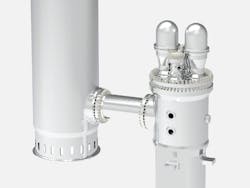MGK Editor's Take: Reactive Compromises on the Road to Net Zero Horizons
Compromise is a sign of weakness, so many quotable souls have said. Don’t give in on your fundamentals.
The concept of nuclear microgrids certainly might fall victim to these unwavering beliefs.
And yet, from an energy point of view, we give in every day in countless ways. The gasoline our millions of automobiles consume releases historical metric tons in heat and carbon dioxide into the air. For those who have forsaken the internal combustion world, the lithium mined for batteries and the silicon for solar will also take a carbon, environmental and landfill toll eventually. Those types of emissions are not as huge as those from gasoline and diesel engines in the long run, but they represent compromise to environmental purity nonetheless.
One hundred years ago last week, Finland commissioned its first-ever hydropower plant on the Tammerkoski rapids. Hydropower delivers clean, carbon-free energy and is still the world’s top renewable resource, but it involves tremendously negative impacts on aquatic life. Its land use impact is also signature, same as solar energy. No one is building major new hydro in the U.S., despite its carbon-free generation.
And yet all of these are pivotal resources to aid us in hopefully cleaning up our atmosphere and slowing the global warming so obviously happening. Reaching net zero in less than 30 years may turn out to be politically and financially prohibitive – certainly in the political pendulum of the United States – but compromise and new directions can find ways to balance the rising tide of electrification with a persisting reality of fossil fuel power generation.
And yet there might exist another new and yet old option: nuclear power. It is energy-dense, carbon-free and has safely powered U.S. naval submarines and power plants for more than 50 years. Yes, there have been significant accidents along the way, stoking a very real and understandable fear of radioactive impacts. Statistically, though, the known fatality impact of nuclear energy is miniscule compared to the killer long-term hazards of coal-fired power and other dirty air emissions.
Developing nations certainly believe in nuclear, with power plant projects going up or being commissioned across China, India, Turkey, United Arab Emirates and Vietnam, among others.
Time will tell if nuclear energy makes a revival in the developed world’s electrical generation space, but it has many believers, including Bill Gates, former U.S. Energy Secretary Ernest Moniz, Elon Musk, and scientist James Hansen, who is a pioneer in climatology and global warming. The Biden administration, a committed supporter of renewable energy, is also propelling nuclear research and generation forward through national labs, the U.S military and educational institutions.
A relatively small private university in northern Texas, Abilene Christian, is researching molten salt as a safety and cooling agent in small nuclear reactors, as I write about today. The U.S. Department of Defense recently expanded its contract with advanced nuclear startup X-energy on a microreactor project to be tested at the Idaho National Lab.
These early steps might lead to someday having remote, small modular reactors powering microgrids for data centers, military bases and more. Then again, there is plenty of understandable opposition purely based on health and safety concerns. Three Mile Island notwithstanding, U.S. nuclear energy history is pretty solid, but the cataclysms of Chernobyl and Fukushima loom large in the public attitude about reactors anywhere near their homes.
So adding more nuclear may be a hard sell, even though more than 90 U.S. reactors are currently in operation and delivering more than half of the nation’s carbon-free generated electricity. For its part, the Nuclear Regulatory Commission is changing of the emergency planning rules on facilitating small modular reactor location.
Somehow, society must edge closer to clean energy realities rather than lofty long-term goals. For instance, another 1 GW of solar might take an additional 10,000 acres of land, yet one well-placed nuclear power plant could deliver close to that capacity on 2% of that footprint. Some compromising considerations and best-value calculations might prove necessary on the path to net zero.








